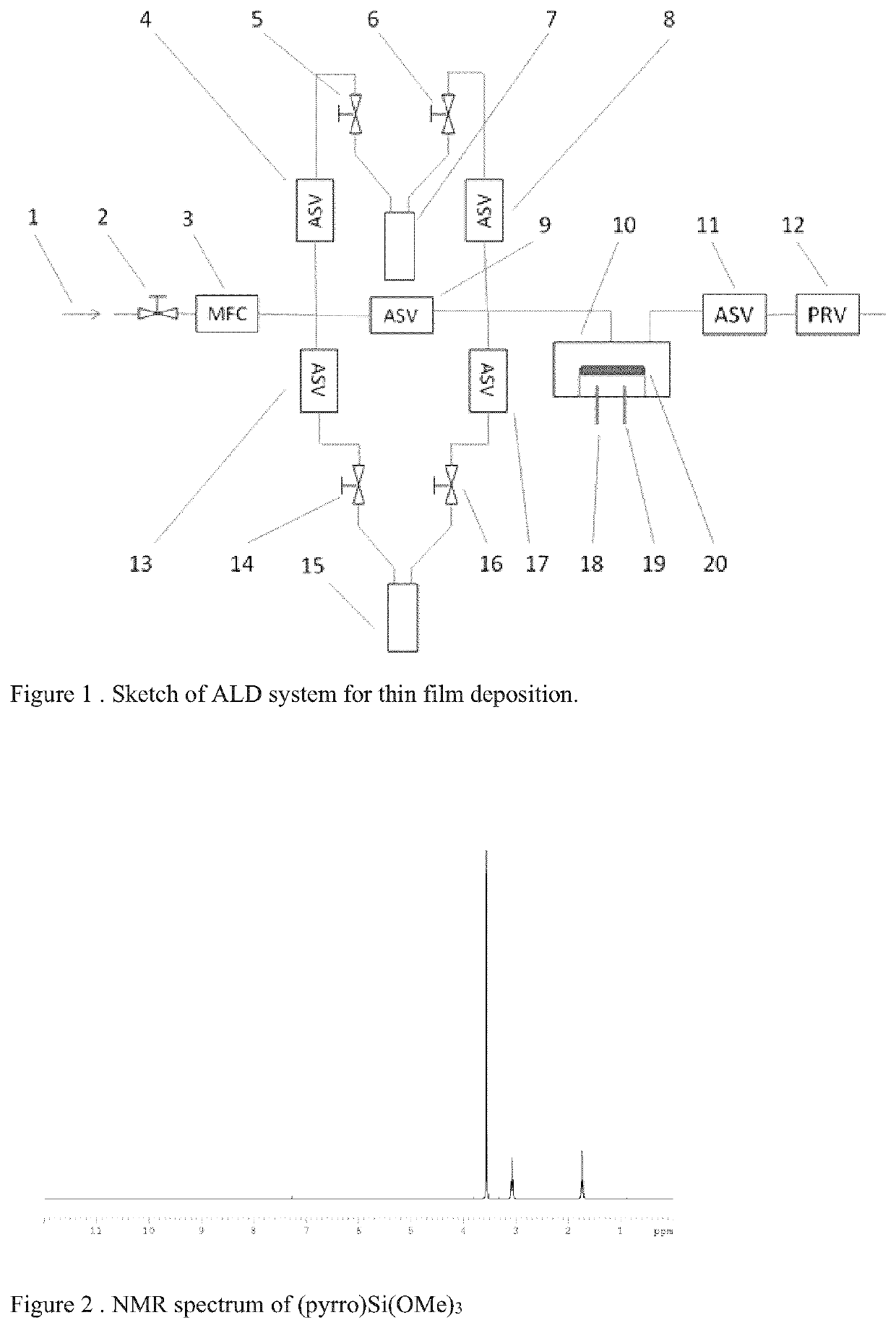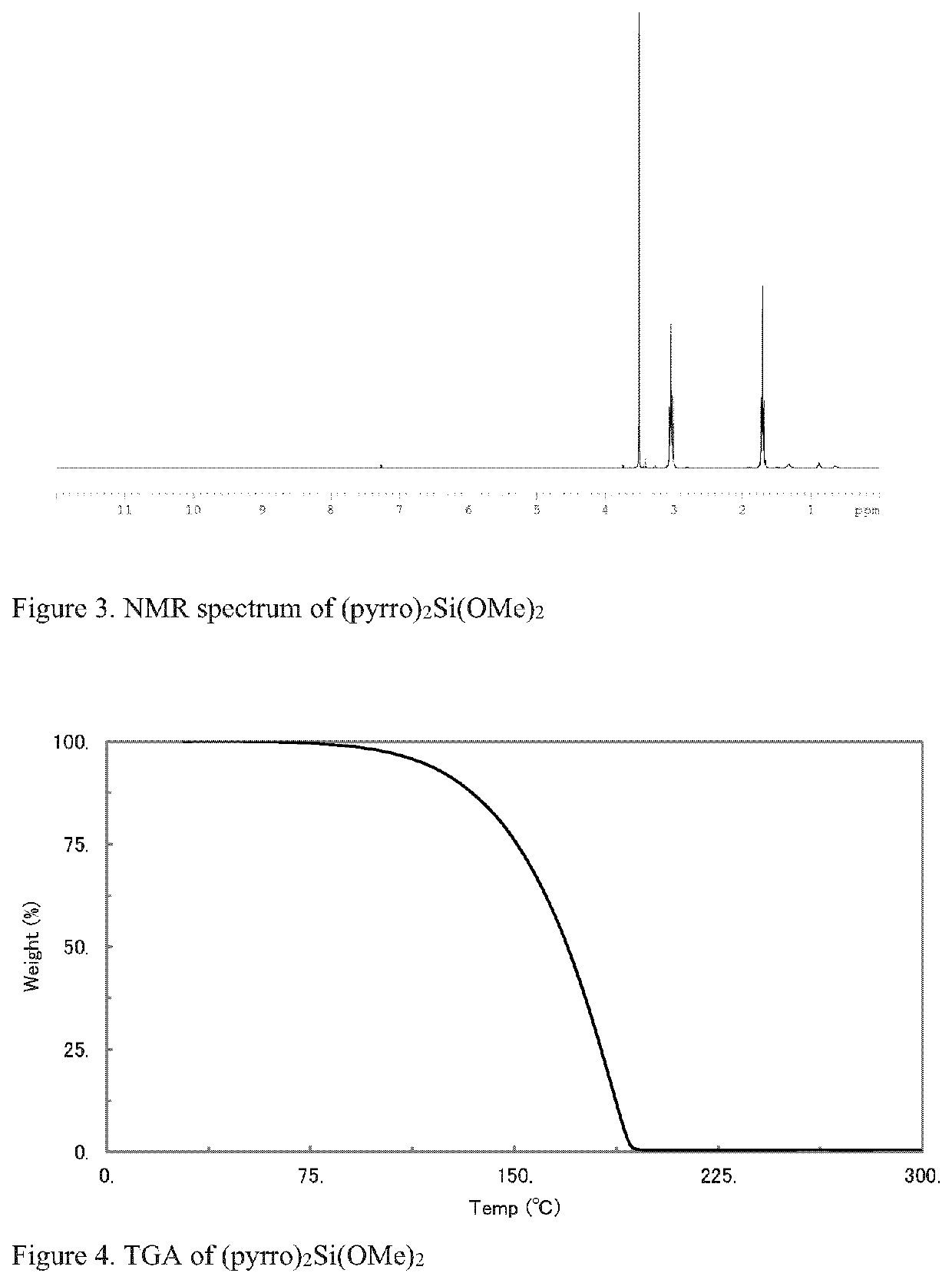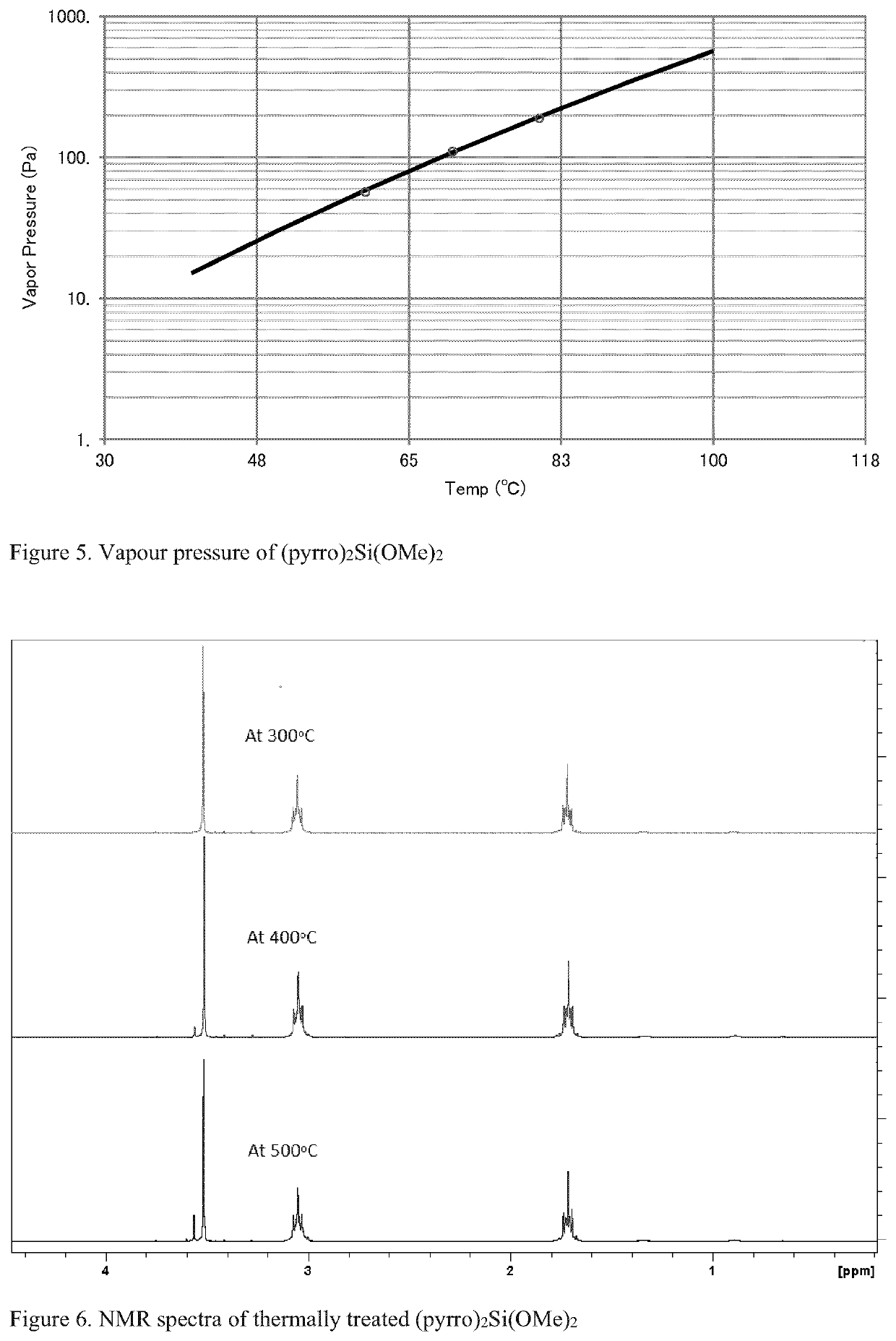Organometallic compound and method
a technology of organic compounds and compounds, applied in the field of organic compounds, can solve the problems of void formation, device damage, and cvd not conforming to high aspect ratio structures, and achieve the effect of high proton affinity
- Summary
- Abstract
- Description
- Claims
- Application Information
AI Technical Summary
Benefits of technology
Problems solved by technology
Method used
Image
Examples
example 1
Synthesis of (pyrrolodinyl)Si(OMe)3
[0085]
[(CH2)4N]—Si(OCH3)3 Chemical formula:
[0086]7.1 g pyrrolidine and 100 mL hexane were charged into a 250 mL flask under N2, followed by the addition of 40 mL of 2.5M BuLi. After stirring for 1 hr, 15.2 g tetramethyl orthosilicate was added. After stirring overnight, the reaction mixture was filtered and a clear liquid collected. Volatiles were removed under vacuum. The obtained liquid product was then purified by distillation. NMR analysis confirmed the product, as shown in FIG. 2.
example 2
Synthesis of (pyrrolodinyl)2Si(OMe)2
[0087]
[(CH2)4N]2—Si(OCH3)2 Chemical formula:
[0088]7.1 g pyrrolidine and 100 mL hexane were charged into a 250 mL flask under N2, followed by the addition of 40 mL of 2.5M BuLi. After stirring for 1 hr, 7.6 g tetramethyl orthosilicate was added. After stirring overnight, the reaction mixture was filtered to collect a clear liquid. Volatiles were removed under vacuum. The obtained liquid product was then purified by distillation. NMR analysis confirmed the product, as shown in FIG. 3. As seen in FIG. 4, the TGA curve shows a stable material with minimal residue. Vapour pressure measurements shown in FIG. 5 demonstrate good volatility and FIG. 6 demonstrates the thermal stability of the compound up to 450° C.
example 3
Synthesis of (pyrrolodinyl)3Si(OMe)
[0089]
[(CH2)4N]3—Si(OCH3) Chemical Formula:
[0090]7.1 g pyrrolidine and 100 mL hexane were charged into a 250 mL flask under N2, followed by the addition of 40 mL of 2.5M BuLi. After stirring for 1 hr, 5.1 g tetramethyl orthosilicate was added. After stirring overnight, the reaction mixture was filtered to collect a clear liquid. Volatiles were removed under vacuum. The obtained liquid product was then purified by distillation. NMR analysis confirmed the product, as shown in FIG. 7. As seen in FIG. 8, the TGA curve shows a stable material with minimal residue. Vapour pressure measurements shown in FIG. 9 demonstrate good volatility.
PUM
| Property | Measurement | Unit |
|---|---|---|
| temperatures | aaaaa | aaaaa |
| thickness | aaaaa | aaaaa |
| temperature | aaaaa | aaaaa |
Abstract
Description
Claims
Application Information
 Login to View More
Login to View More - R&D
- Intellectual Property
- Life Sciences
- Materials
- Tech Scout
- Unparalleled Data Quality
- Higher Quality Content
- 60% Fewer Hallucinations
Browse by: Latest US Patents, China's latest patents, Technical Efficacy Thesaurus, Application Domain, Technology Topic, Popular Technical Reports.
© 2025 PatSnap. All rights reserved.Legal|Privacy policy|Modern Slavery Act Transparency Statement|Sitemap|About US| Contact US: help@patsnap.com



